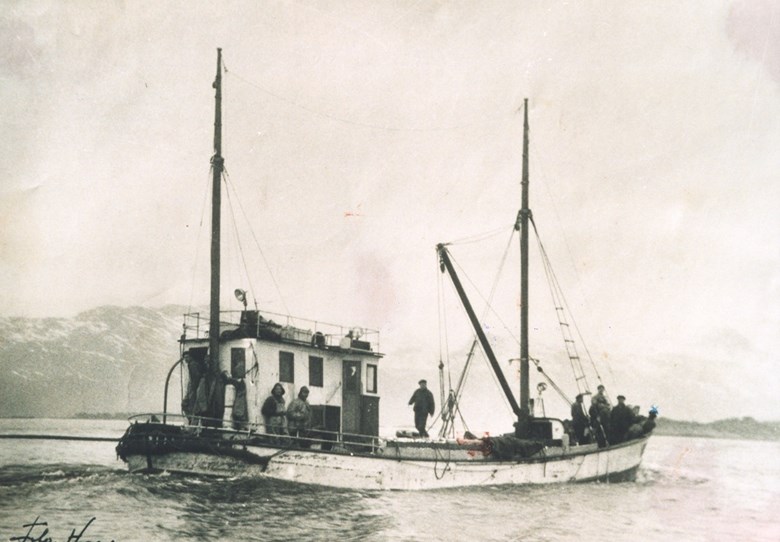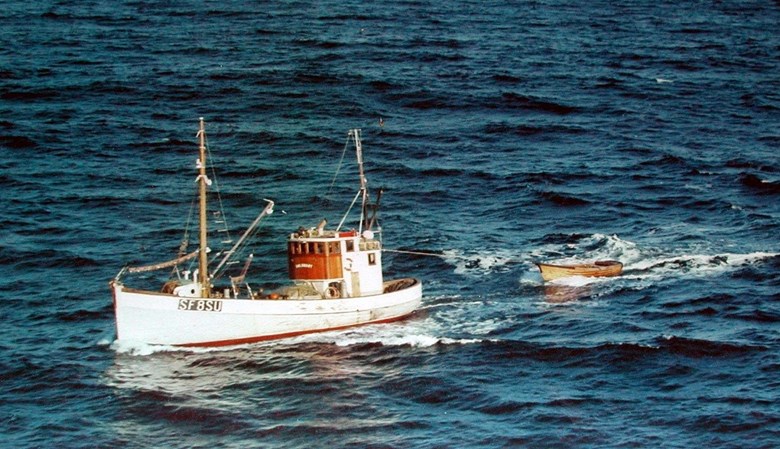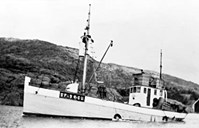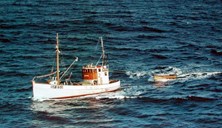Solund vessel one of the pioneers
In 1949, seine fishing for tuna became important in the north of Norway. Two vessels from the south had even installed American tuna purse seines, which were now being tested. The result was questionable, but the fish was big, and optimism along the coast rose. The following year, more ship-owners had bought one, or had their own seines made, among them Bjarne Færøy and his brothers, who went north to the Helgeland coast on the vessel "Nordsolund". Only a month and a half later, they were able to fish, but then off the county of Sogn og Fjordane, near Kråkenes, where they caught 120 fish. The recent investment was a coalfish seine which cost NOK 36,000, made by Kristiansand Fiskegarnsfabrikk.

The historic catch
The historic catch was made by the "Nordsolund" on 4 August,1950, in the Hellefjorden, where they caught 748 tuna. Neither before nor later did anyone catch such a high number of fish in one haul. Several vessels arrived to assist. After ten hours, seven vessels were loaded. The gutting took place at the quay at Florø, where "nobody has seen a bigger bloodbath".
Hauls such as this were often lost since the seines at the time could not cope with the power and weight of such quantities. Only in 1957 did the first vessels have nylon in parts of the seines. This was a success, and little by little, the whole seines were made of nylon. The power block, which was well suited for tuna fishing, were on the vessels from 1959 onwards.


Several Solund vessels participated
In Solund several people invested in tuna seines jointly, but there were also those who owned two seines. In all, about ten vessels in Solund had a tuna seine onboard. In addition, several boats were hired out as auxiliaries. Some who had no seine vessels of their own, rented one.
Some had the stern of their vessels rebuilt, to make room for the seine behind the wheelhouse. This made work easier, and there was less tearing. At the same time, brand new, splendid vessels entered the field, with powerful engines and equipment made for this fishery. The "Rator" from Færøy was such a boat. It replaced the "Nordsolund".
Brisk, exciting, and dangerous
Tuna fishing took place in the summer and close to land, yet it could be rough. In high or rolling seas, the risks were high, and there were accidents. Sometimes the current was so strong that the auxiliary vessels were unable to tow the seine vessels with haul, clear of rocks and skerries. In this way a tuna purse seine vessel was lost off Utvær in 1961, and one other vessel was saved at the very last minute.
When the tuna was baiting, it was easy to spot. Far more difficult it was when only the fins could be seen, so-called "stripefisk". The whole crew were on the look-out. The man in the look-out barrel had to be especially vigilant and sharp-eyed. - He was a crucial crew member, an experienced fisherman said.
From huge quantities of tuna to empty seas
The tuna fever spread quickly. It was at its highest in 1952. All of western Norway invested in expensive seines. And in the sea there were huge shoals of tuna. Many vessels made several hauls a day and loaded the fish on to gutting vessels which followed the seine fleet. It was important to clean and put the tuna on ice as soon as possible to protect the quality in the summer temperature. Once the receiving capacity on land was overstretched, and a stop order was issued from 5 to 11 August, 1952.
In the period thereafter, there were years of deep despair and years of fabulous riches. Some gave up, but a new fishery was emerging: ring net fishing in the North Sea. 1980 was the last year when tuna fishing was profitable.





